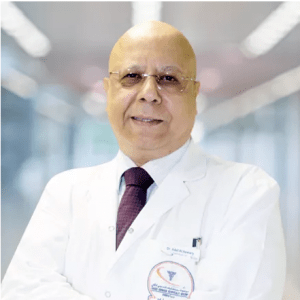Plica Syndrome
An overview Plica is the part of the knee that consists of the mesenchymal tissue, which is formed in the knee during the embryological phase of development. This tissue is what forms the membranes that divide the knee into 3 compartments: The medial tibiofemoral compartments, The lateral tibiofemoral compartments, and, The suprapatellar bursa. The mesenchymal tissue usually […] Read More
Top Doctors For Plica Syndrome Treatments
Top Hospitals For Plica Syndrome Treatments
Plica Syndrome
An overview
Plica is the part of the knee that consists of the mesenchymal tissue, which is formed in the knee during the embryological phase of development. This tissue is what forms the membranes that divide the knee into 3 compartments:
- The medial tibiofemoral compartments,
- The lateral tibiofemoral compartments, and,
- The suprapatellar bursa.
The mesenchymal tissue usually starts to involute (that is, folds inward) at 8 to 12 weeks of foetal growth, and it eventually becomes resorbed, leaving a single empty area between the distal femoral and the proximal tibial epiphysis. The movement of a foetus while in the uterus contributes to this resorption. However, in many individuals, the mesenchymal tissue is not fully resorbed, and as a result, the cavitation of the knee joint remains incomplete. The outcome in these individuals is that plica can be observed, which signifies inward folds of the synovial membrane in the knee joint. Several degrees of separation of these cavities are seen in the human knee.
Plica syndrome is an irritation or an inflammation of a part of the synovial membrane in the knee. The synovial membrane is where the knee joint is enclosed, and also contains the fluid that keeps the joint lubricated.
Plica syndrome occurs when there is an irritation of this synovial lining, usually as a result of repetitive friction to the tissue, or in some cases as a result of a direct hit on the knee that traumatizes the tissue. Due to this, this tissue becomes thick and painful. Repetitive friction occurs as a result of abnormal forces at the knee, most probable in the kneecap and surrounding musculature. It may also be caused by muscular weaknesses or structural abnormalities at the hip or foot, which in turn place increased tension on the knee.
Diagnosis of Plica Syndrome
These are of three types – physical examination, radiological tests and diagnostic tests.
- Physical examination
The first step in the diagnosis of plica syndrome is a physical examination of the plica syndrome knee. This is carried out to rule out any other possible causes of knee pain, like a torn meniscus, tendonitis and bone injury.
During a physical examination for a plica, syndrome knee makes sure to tell the doctor about the sports you play, your exercise routines, and/or any recent accidents or injuries.
- Radiological Tests
If after the physical examination of a plica syndrome knee a conclusion could not be reached or there is any uncertainty in the diagnosis or other injuries are being suspected, a magnetic resonance imaging, MRI, the test may be suggested. The MRI using magnetic waves shows the soft tissues of the body.
A CAT scan may also be carried out to check whether the plica has become thickened. However, in most cases of plica syndrome special tests such as the MRI or CAT scan is not usually required.
- Diagnostic Tests
If the physical examination carried out on a plica syndrome knee strongly suggests that a plica syndrome is present in the knee, an arthroscopy may be proposed. This is to confirm the diagnosis and also treat the problem at the same time.
An arthroscopy is an operation in which a small fibre-optic TV camera is inserted into the knee joint. This allows the orthopaedic surgeon to assess the structures inside the knee to determine whether the plica is inflamed or not.
Plica Syndrome treatment
The plica syndrome treatment options are as follows
- Conservative plica syndrome Treatment
Usually, most people with plica syndrome get better without undergoing surgery. The primary plica syndrome treatment goal is to reduce inflammation, and this may require limiting activities such as running, biking, or using the stair-climbing machine.
- Surgery
If conservative plica syndrome treatments fail, arthroscopy surgery may be proposed. This technique sees an arthroscope inserted into the knee joint through a one-quarter inch incision. After locating the plica, another one quarter inch opening is made, through which small instruments are inserted to cut off the plica tissue and remove the structure. The area the plica has been removed heals back with scar tissue.
- Rehabilitation
Aftermath surgery, you will be handed over to a physical therapist. Your first few rehabilitation sessions will be designed to ease the pain and swelling, and help you begin tender knee motion and thigh tightening exercises. Rarely are crutches needed after this kind of surgery.
The goal of the therapist is to help patients keep their pain under control, ensure they aren’t exerting too much weight on the injury, improve the strength of quadriceps muscle and knee range of motion. As soon as the patients get underway, their regular visits to the therapist’s office stop, and while the therapist will continue to be a resource, the patients take charge of their exercises as part of an ongoing home program.
Symptoms
The main plica syndrome symptoms is knee pain. While this can be caused by several conditions, pain related to plica syndrome is usually achy and worsens when squatting, bending, or using stairs.
Additional plica syndrome symptoms may include:
- A catching or locking sensation in the knee may occur when standing up (from a chair) after a long period of sitting.
- Inability to sit for a long period of time without experiencing knee pain.
- Clicking or cracking sound when the knee is bent or extended.
- Feeling unstable on stairs and slopes
- You may also be able to feel your swollen plica when you press the knee cap.
- Visibly palpable tender plica.
- In chronic cases quadriceps atrophy is common.
Causes
Plica syndrome occurs from a combination of several different factors, such as:
- A decreased mobility of the kneecap.
- A Quadriceps (front of the thigh) muscle or hip muscle tightness.
- Muscular imbalances in the hamstring (back of the thigh), hip muscles, or quadriceps.
- An improper technique with repetitive activities.
- Plica syndrome is also caused or worsened by increased activities.
- A change in the routine of an exercise or a sport activity.
- An abnormal hip or knee structure.
- An abnormal hip or knee mechanics.
- Injuries.
FAQ
- Are there exercises I can do for relief of plica syndrome?
Yes, and in fact, most cases of plica syndrome respond well to physical therapy or a home exercise program. This typically involves stretching your hamstrings and strengthening your quadriceps, and within 6 to 8 weeks of starting physical therapy or an exercise program, you start to feel relieved.
- How long does it take to recovery from plica syndrome?
This depends on several factors including the overall health and the affected knee. For example, if surgery was carried out on your right knee, you may need to wait for about 2 weeks before driving. However, if it is the left knee that was affected, fully recovery make take place within 3 to 4 days.
You may, however, need to wait a number of weeks before returning to regular levels of exercise and physical activity.
- How does it feel Living with plica syndrome?
Plica syndrome is usually very easy to manage with physical therapy and sufficient home exercises. And if surgery is required, the procedure is minimally invasive and the recovery period is usually less than many other types of knee surgery.
- How to Prevent Plica Syndrome?
Plica syndrome usually occurs concurrently with other knee conditions. Therefore, it is necessary to be proactive in managing other knee injuries. This consist of maintaining adequate strength, normal knee joint alignment, and flexibility in the muscles around the knee joint plus the rest of the lower limb. It is also important to wear appropriate footwear that supports your foot biomechanics.
Weight-management also plays a role in the pressure exerted on lower limb joints, and as a result, should be something considered as a long-term preventative measure in plica syndrome.
- How does it feel to have plica syndrome?
Those with plica syndrome may experience:
- Pain and tenderness at the front of the knee and on the inside of the kneecap.
- A snapping or catching sensation while bending the knee.
- A dull knee pain at rest, that increases with activity.
- Some tightness in the knee.



















































































































































































